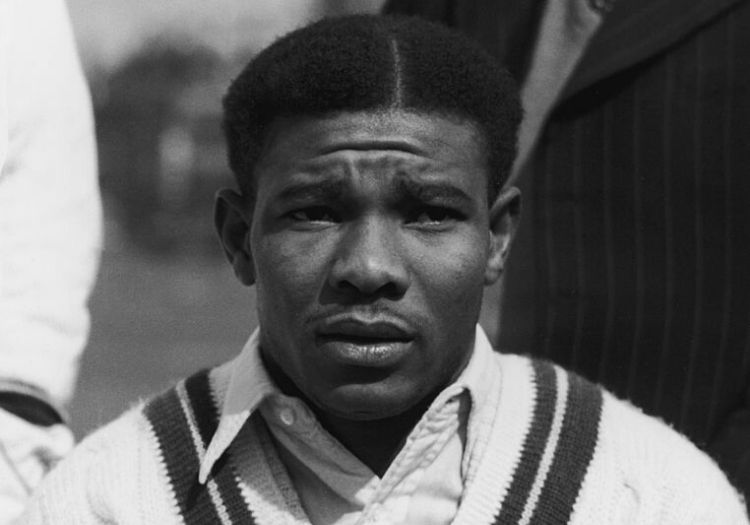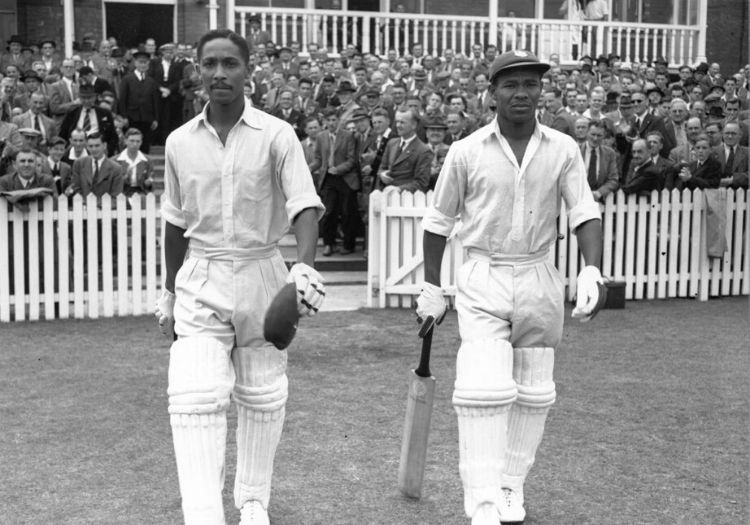PAUL EDWARDS: It was no surprise at all that one of the first tweets expressing sympathy at the passing of their old pro came from folk at Lanehead Lane. They will never forget those days

If the name Stanley Banham rings even the faintest of bells, I salute both you and your anorak. It meant nothing to me until some years ago when, on a wet morning at Aigburth, I was sitting in the press tent and browsing through old scorecards online while waiting for play to begin.
For some long-forgotten reason my eye settled on Lancashire’s home match against the touring West Indians in 1939 and, in particular, on the name of S T Banham, who was down to go in at No.11. But it turned out that it really didn’t matter where Banham was due to bat because a strong Lancashire batting side lost just four wickets in their only innings.
Replying to West Indians’ 284, the home team made 325 for four declared and the tourists were 114 for two in their second innings. The first day’s play had been lost to rain, so a draw was hardly surprising. Banham’s one other mention on the card records that he caught Derek Sealy for 4 off the bowling of Eddie Phillipson.
Stanley Banham was a wicketkeeper with few pretensions as regards batting. He played 13 games for Lancashire’s second team in 1938 and 1939 and was effectively an understudy to Bill Farrimond, who himself had waited most of his career to take over from George Duckworth. Banham had been re-engaged for the 1940 season when war broke out.
He eventually served in the Royal Scottish Fusiliers and was taken prisoner in Italy. When he returned to England in 1946, his chance of a professional cricket career had gone. That match in 1939 was his only first-class appearance. He joined the Thank-You-and-Goodnight club.
The problem was that cricket was in Banham’s blood. It had been so since he had been chosen to keep wicket for Sharneyford School in Bacup. He was only 11 at the time and the choice had been made by the headmistress “who didn’t know who could play and who couldn’t.” But Banham was small and no one else wanted to keep, so there he was. In a way, it would be the making of him.
By the time he was 20 Banham was keeping for Bacup’s first team in the Lancashire League. It was 1934, one of league cricket’s great eras, when hundreds of spectators would attend matches and a town’s cricket team was an expression of local pride. (The comparison with college football or minor league baseball in the USA may seem bizarre but it is not inappropriate.)
Banham played for Bacup both before and after the war, skippering the club in 1950 when the great West Indian batsman, George Headley, was the professional.

Everton Weekes passed away at the age of 95 on July 1
And it was the Caribbean connection that brought Stanley Banham back to my mind over the last few days. Earlier in the week I was writing a piece about Sir Frank Worrell, the first black man to be appointed official captain of West Indies.
It was something of an honour to do it but no sooner had the piece been completed than we heard the sad news of the death of Sir Everton Weekes at the grand age of 95. The last of the three Ws has gone.
Weekes, Worrell and Clyde Walcott were all born near to the Kensington Oval in Barbados, an island which must have produced more world-class cricketers per square mile than anywhere else on earth. In time all three would be knighted, although Worrell was the first to be honoured in 1964.
The link with Banham is that all three W’s were professionals in the Lancashire leagues, Worrell at Radcliffe, Walcott at Enfield and Weekes at Bacup. The engagement of a professional was a condition of a club’s membership in such leagues and it was usually fairly straightforward to employ a high-class cricketer in the days when hardly anyone else in the world played cricket through the English summer.
Test cricketers were not paid very much in the late 40s and 50s, so the money from league cricket, plus the public collections for a half-century or five wickets, came in very handy. (The great Australian bowler, Ted McDonald, earned a princely minimum of £500 a year when playing for Nelson in the early 1920s and only played for Lancashire in midweek until the county struck a deal with the club.)
Worrell, Weekes and Walcott: One pair of hands, three greats, three Ws
I don’t know of any detailed study of the professionals employed by Lancashire league clubs in the 20th century but someone with detailed local knowledge should write one. The roll-call of West Indians alone also includes Learie Constantine and Viv Richards, so there is plenty of material with which to work. What seems clear is that many professionals became intensely loyal and very fond of the clubs for which they played.
They were members of their teams rather than well-paid superstars. When Weekes did well and received a collection he frequently placed the money on the pub table after a match, saying as he did so: “When that’s gone we’re going home.” The affection was reciprocated. It was no surprise at all that one of the first tweets expressing sympathy at the passing of their old pro came from folk at Lanehead Lane. They will never forget those days.
Stanley Banham worked as a joiner after the war but in 1953 he left Bacup to become professional groundsman at Peterborough CC, where he was responsible for preparing the ground for Northamptonshire’s annual County Championship match. He played some cricket, too, but none of the matches are recorded on that peerless online resource Cricket Archive. Banham retired in 1978 and died, aged 71, in 1984. Helped by his son, Mel, and daughter, Millie, I wrote a three-page article about him for the 2013 Lancashire Yearbook.

Weekes (right), pictured with Frank Worrell walking out to bat for West Indies, played Lancashire league cricket for Bacup
There was, though, one match that did not feature in that piece. It was played on the Ernest Valentine Ground, Workington, in July 1951 when Clyde Walcott took a Commonwealth XI to take on Cumberland and Westmorland. The top five in the visitors’ batting order that day read as follows: R E Marshall, S T Banham, F M M Worrell, E D Weekes, C L Walcott. So there was Stanley Banham, opening the batting with Roy Marshall, who was soon to make his Test debut, and followed by three of the game’s greatest players.
The star of the Commonwealth team’s bowling was Sonny Ramadhin, who had taken 26 wickets the previous summer when West Indies beat England 3-1 in a famous Test series. Banham managed just five runs but I’ll take a large bet he enjoyed the game. Walcott and Weekes made 70s and the match was drawn.
And this weekend cricket clubs around England will be opening their doors once again. Not for matches quite yet but at least to sell beer and food and to remind people how integral they are to their communities. Junior coaching is already taking place and soon some semblance of normal cricket will be seen again.
When this pandemic began I expressed the simple hope that all clubs and counties would survive it. It may be tough for some over the next year – we will have to find new ways of cutting a little less cloth – but I repeat my hope this rather drear Friday morning and send my warm wishes to clubs in Peterborough, Workington, Bacup and, indeed, across the whole of England. I rather think that Everton Weekes and Stanley Banham would join me in my greetings.
Save 30% when you subscribe to The Cricketer’s print & digital bundle. £35 for 12 issues